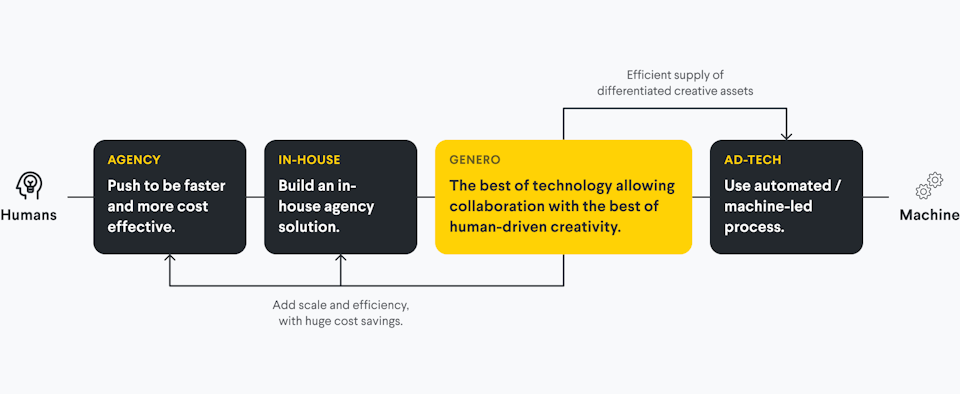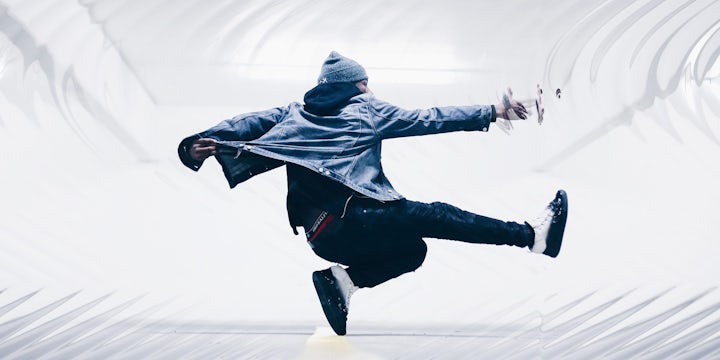
The art of writing an effective creative brief.
Guides & Inspiration • 11min read
Guides & Inspiration • Written by Matt Perry, Managing Director - Americas
Looking back, those insights seem so quaint today before the advent of smartphones and social media. It was like a cottage industry of marketing clutter and noise via TVs, radios and some billboards outside Macys. Of course, we literally had no idea what was to come.
Technology has become increasingly more prevalent in advertising. We are connecting brands with people programmatically across the entire consumer journey. Not only are we better at targeting via an endless number of touchpoints, we now have to create mountains of content to fill all of those environments, formats and aspect ratios. Of course, ensuring we’re adopting and developing perpetually evolving best practices.
As we rapidly approach the end of the first quarter of this century, humans are trying to adapt their behaviours to cope with this virtual tsunami of data, memes, and commercial messages piped to them via always-connected devices and social media. One astute creative strategist at Facebook said to me recently, we live in a world where there has “never been more ideas. And yet there has never been more need for ideas”. The challenge for marketers is how to get these ideas and messages to people faster, cheaper and with the same level of quality that their audiences have come to expect.
In an attempt to keep pace, marketers are turning to technology, machine learning and algorithms to feed the content beast. New ‘creative tech’ platforms are helping to generate campaigns more efficiently and allowing the optimization of performance on the fly.
This pivot to creative tech is incredibly important for the future of advertising, but what is it doing to creativity?
The tech vs. creativity battle is partly driven by cost-saving, no doubt. Creative tech platforms are indeed incredibly efficient and consequently pointing a powerful blowtorch on the costs associated with the traditional creative production model. This is now rampantly burning away the very foundations of traditional agency business model. Yet the outputs of these platforms are by their very nature focused on precision at the expense of creative excitement and human engagement.
Like many marketers, I believe that human-centric insight remains a critical component in truly engaging and sustainable advertising products. We absolutely need the efficiency that tech can provide. However, if we want creative with the power to activate brands throughout the consumer journey we need human insight and ingenuity too.
Of course, the challenge for marketers is how to access human creativity with less of the frustrations and inefficiencies of the traditional creative production model? In my opinion, this is where technology should play a supporting, not central role.

Let’s imagine that instead of relying on technology to build the creative, we use tech to streamline the process. Instead of simply abdicating the responsibility of creative development to an algorithm because it’s cheaper, a marketer can utilize a creative toolbox, to connect and collaborate with a vast network of creatives more efficiently.
In this world, an endless pool of professional creatives working outside of the confines of the ad districts of NYC, LA and London are available. Like with other industries, where the internet has enabled connections that were otherwise impossible, a marketer can now seamlessly connect and work with creatives in any part of the world. They can utilize this for fresh, diverse creative thinking, local cultural insights and content from, or for, any market in the world, all much faster and at a lower cost than the traditional model.

Creative technology presents us with a bright new advertising future. However, great creative ideation and development only work if it pushes beyond data analytics and algorithms alone. Tech gives us greater efficiency, but it’s humans that keep our brands fresh, relevant and relatable to the consumer. Fortunately, we can now have both.

Guides & Inspiration • 11min read

Guides & Inspiration • 4min read